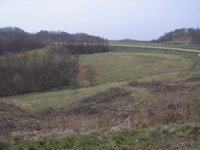The Roanoke Times recently ran a story about conservation easements and the effects they have on land development and owner profit.
For those who might need a refresher, conservation easements (also known as land trusts) are an agreement between a landowner and a conservation organization to limit or prevent property from being developed. Land owners often get tax incentives for establishing a conservation easement because they’re seen as charitable gifts by federal and state authorities if certain standards are met. Excess tax credits (over what a landowner owes), can even be sold (usually for around 75 to 80 cents on the dollar).
In the ever-growing Mid-Atlantic region of the United States, conservation easements have become increasingly popular. But does this negatively impact progress? Sure, it’s admirable to protect land for future generations. And it’s certainly something to think about when green fields disappear overnight to “Anywhere, USA” sprawl. (We’ve all heard and can identify with the numerous versions of “Big Yellow Taxi” on the radio).
Here’s the deal. Progress is eminent. Progress is necessary. And, progress can be smart.
In other words, development can happen (and often does happen) with careful consideration to the environment, the aesthetics of a place and to the benefit of revitalization goals or economic sustainability of a community.
Redevelopment on a brownfield (sometimes called an infill) is a great example. Here, a site (usually in an urban setting) that has been previously contaminated or contains potentially hazardous materials is cleaned and developed for another use. Redevelopment on a brownfield often shows efficient use of available resources and results in positive impacts on both the environment and a community.
Greenfield development (development on previously unused land) that incorporates the idea of smart growth is also a great example. The Urban Land Institute published a study titled “Green Development Without Sprawl: The Role of Planned Communities,” which discusses the benefits of greenfield development within planned communities as conserving open space, preserving community character and heritage, preserving environmental attributes and providing a greater opportunity for mixed use and transportation improvements within a community.
While valuable, conservation easements risk threatening smart land development and progress.
What are your thoughts on the issue? Let us know and we’ll discuss…
Monday, August 27, 2007
Subscribe to:
Posts (Atom)
